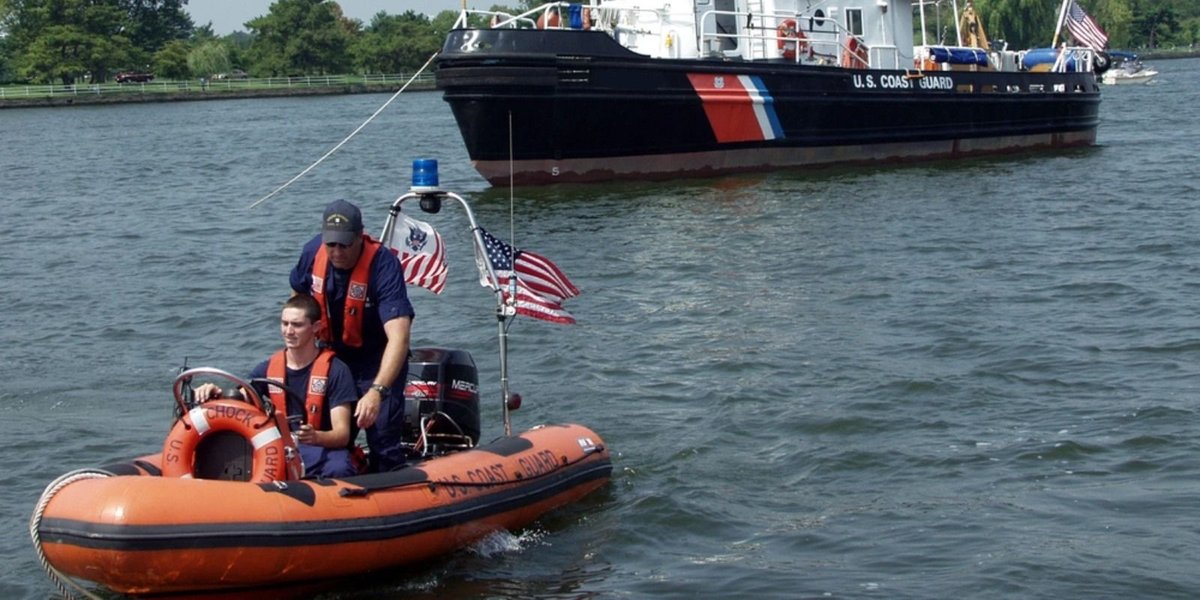5 THINGS YOU DIDN'T KNOW ABOUT THE COAST GUARD AUXILIARY
By Olivia Rigby

Advertisement
What is the Coast Guard Auxiliary? We’ve all heard of the Coast Guard, which is the smallest military branch in the United States, and they’re not just with the military; they’re also with Homeland Security. The Coast Guard Auxiliary and the Coast Guard branch, however, are not the same thing. The Auxiliary is the civilian uniformed volunteer team of the Coast Guard. At first, this unit might sound a bit funny, but it’s essentially the reserve for the Coast Guard.
Read next: The Seabees Are Where Construction Meets Warfare
What Is the Coast Guard Auxiliary?
Many people who’ve never heard of this group before and are just learning about it might be asking, “Is the Coast Guard Auxiliary a joke?” We’re here to tell you that it definitely is not a joke. Their main goal is to assist the Coast Guard in their efforts. The Auxiliary has a handful of missions, benefits, awards, ranks, and even uniforms. Keep reading to learn all about them. (For more details on the things below, you can check out the Coast Guard Auxiliary Handbook, but FYI, it’s long.)1. Their 10 Core Missions Are Unique and Vital
One of the coolest aspects of the Auxiliary is the missions under their care. According to their website, the Coast Guard Auxiliary missions consist of about 10 major missions; here are a few important ones listed below:- Aviation: This part of the Coast Guard Auxiliary is called AUXAIR. They play a huge role in helping the Coast Guard with search-and-rescue missions, and they can be navigation aids, help with pollution response, and much more.
- Coast Guard Support: This role the Auxiliary can play is pretty self-explanatory. They can assist with Coast Guard food services, clergy, health care, language interpretation, and even communication between Coast Guard members and their families.
- Marine Safety and Environment Protection: The Auxiliary helps with boat inspections. Though it may sound unimportant, boat inspections are vital for the safety and protection of marine wildlife and the environment.
- Recreational Boating Safety: Those in the Auxiliary can assist the Coast Guard in inspections of recreational boating vehicles. Part of this mission also consists of educating the public about safe boating practices.
- Recruiting: Auxiliarists can assist in Coast Guard recruiting efforts.
Advertisement
2. They Get Many Coast Guard Benefits
The Auxiliary has a lot of benefits for their participants. Among those benefits are things like uniforms and awards, which are explained in more detail below. Another benefit Auxiliarists can take part in is being able to purchase anything at Coast Guard Exchange stores with proper identification, like a uniform, with a Coast Guard Auxiliary ID. Members can also get tax exemptions, access to certain perks within the Coast Guard Federal Credit Union, and can even get Coast Guard Mutual Assistance when needed.3. They Can Earn Around 34 Different Ribbons
Like other military branches, those who volunteer in the Auxiliary can receive awards and recognitions; these awards are often symbolized with Coast Guard Auxiliary ribbons and medals. These 34 ribbons available to be earned by the Auxiliary can be worn on uniforms, just like with other branches of the military.4. Their Ranks Aren’t Like Military Ranks
The Coast Guard Auxiliary ranks are different from other military ranks, but they’re still pretty simple to understand. The ranks begin with Flotillas, who take care of most of the daily Auxiliary tasks. Groups of Flotillas form Divisions. Divisions groups are then formed into Districts/Regions; Districts are supervised by an active-duty member of the Coast Guard, usually a Commander. Above Districts/Regions are Areas, which consist of Deputy National Commodores who are responsible for three geographical areas of the U.S. The entire Auxiliary is supervised by those in the National rank; they are in charge of Auxiliary policy-making and administration.Advertisement
5. They Have Different, Unique Uniforms From the Coast Guard
Understanding the Coast Guard Auxiliary uniform is pretty simple. Just like with the rest of the military, there’s a lot of variety with the uniforms, but the Auxiliary has a little more leeway with their uniforms. The dress uniforms are just like the Coast Guard dress uniforms, but the buttons and the braid are silver, and there’s an Auxiliary-specific insignia on the uniform. The Auxiliary also has an Operational Dress Uniform; this can be worn with polo shirts and baseball caps. These uniforms are still very military-style, but they’re a little more relaxed than some other military branches.Joining the Coast Guard Auxiliary
To join the Auxiliary, applicants have to be at least 17 years old and have a U.S. Social Security Number. Good news, though: The Coast Guard Auxiliary age limit doesn’t exist. There isn’t a maximum age limit for those wanting to join, but you do have to prove that you’re able to perform the duties required of a specific role/position within the Auxiliary. The Coast Guard Auxiliary may seem confusing at first, but this part of the military does a lot for us. Their efforts in things such as search and rescue and boating safety have undoubtedly saved thousands of lives. Their assistance to the Coast Guard is essential and beneficial for all. See more: How to Volunteer at a Military Base & Serve Our Country!The appearance of U.S. Department of Defense (DoD) visual information does not imply or constitute DoD endorsement. | Photo by Joseph P Cirone | U.S. Coast Guard District 5
Written by
Olivia Rigby
Olivia Rigby is a Contributing Writer at VeteranLife.com.
Olivia Rigby is a Contributing Writer at VeteranLife.com.
Advertisement
SHARE:



